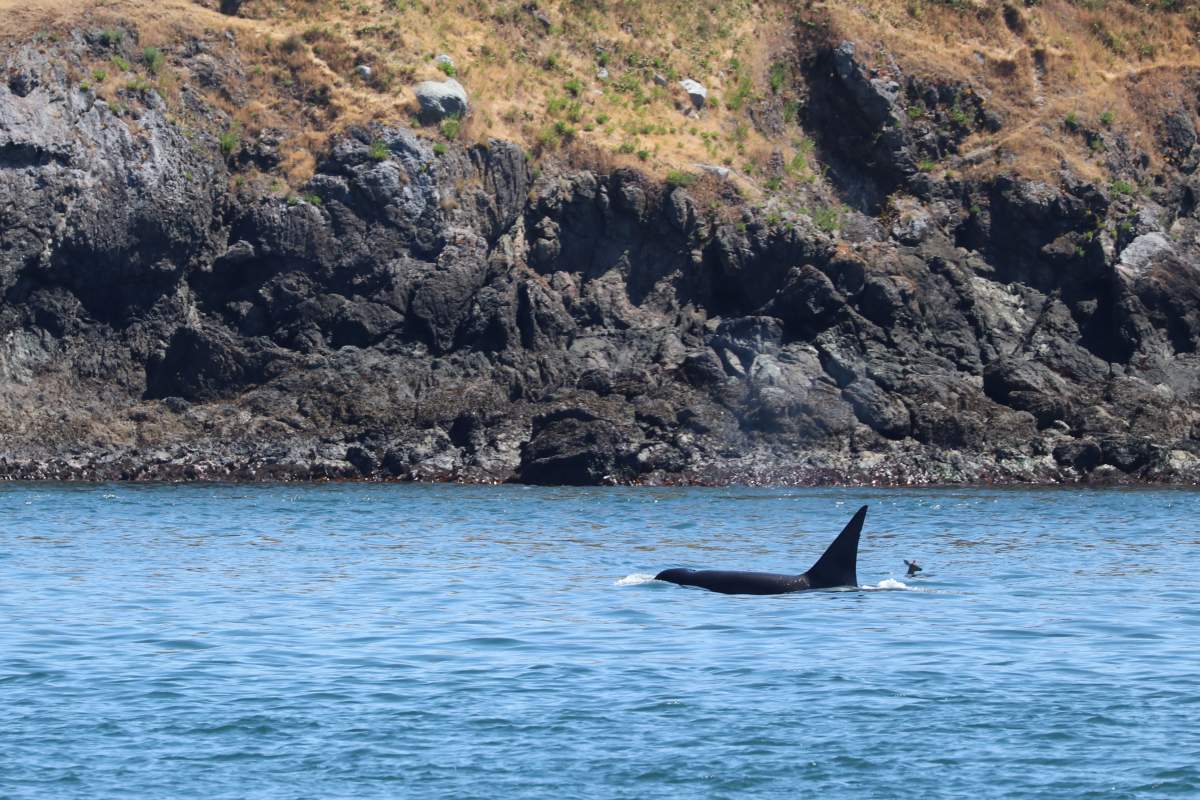Thousands of social media users on both sides of the Canada-U.S. border are marvelling at a “one in a million” photograph of a deer swimming next to a mammal-munching killer whale earlier this month.

Marine biologist Sam Murphy snapped the image of the Bigg’s killer whale on Sunday near a small island northwest of the San Juan Islands, by British Columbia’s border with Washington. The naturalist, who works for Island Adventures Whale Watching, didn’t even realize the deer was in the photo at the time, according to a colleague at the Pacific Whale Watch Association.
“I have definitely never seen it before. Neither had Sam, the photographer here,” executive director Erin Gless told Global News.
“So obviously, as whale watchers, it’s very common for us to see orcas. Occasionally you will see deer swimming from island to island, but I think it’s kind of a one in a million chance to have the two of them in the same shot like this.”
Gless said the image has become one of the organization’s “most viral.” Some people are shocked — and relieved — the killer whale didn’t eat the deer, but Gless said she’s not surprised.

Get breaking National news
Fatty seals are the preferred food of the Bigg’s killer whale and a lean, grisly bit of venison would be unlikely to tempt an otherwise well-fed animal.
“I think sometimes, because they are called killer whales, people get this assumption that they’re just, you know, mindless killers that are out there hunting everything that they come across,” Gless said. “But the truth is they are selective.
“Just like when we’re going through the pantry, we would much rather have, you know, a nice juicy burger than maybe a rice cake, like this deer might look like to this particular orca.”

Josh McInnis, a marine mammal scientist at the University of British Columbia, said he wasn’t surprised the whale didn’t go for the deer either.
“Killer whales are quite intelligent and have the ability to recognize prey that they’re after, in particular things like seals or sea lions,” he explained.
“They may investigate a swimming close to get a better look at it, in particular in murky water, but in this case, it would likely recognize exactly what it was looking at and continue to move on.”
Biting something to gather information about it is behaviour more often seen from sharks, he added. It’s like this particular whale has a healthy supply of seals and porpoises to eat, he added.

The whale in the photo is known to researchers as Cooper, or T124C, born in 1992.
Island Adventures Whale Watching hosted a photo caption contest for the images of Cooper and his deer friend. More than 170 people commented.
The winning entries were, “This deer wishes it was at the bank. That’s where a buck is safe,” by Eric Barnes, and, “Oh deer, I’ve made a bigg mistake,” by Jackie Murray.









Comments